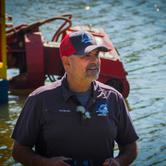How to Prevent Harmful Algae Blooms (HAB’s) in Your Lake or Pond
Summertime is here, and that means hot temperatures and an increased risk of harmful algae blooms in your HOA, golf course, or residential pond. Over the past few decades, they have been occurring increasingly regularly. This is partly due to climate change and the increased use of organic fertilizers that settle on the bottom of ponds and provide an abundant nutrient source that allows these blooms to occur. We will examine HABs and how to protect yourself, your loved ones, and the general public from this potentially lethal nuisance algae.
What is a Harmful Algae Bloom?
The Environmental Protection Agency (EPA) monitors and tracks harmful algae bloom trends across the United States. HABs consisting of blue-green algae, cyanobacteria, and red tides contain hazardous toxins to humans, pets, and wildlife. In people, the toxins within an HAB can cause a wide variety of health issues, such as:
- Kidney and liver damage
- Skin rashes
- Nervous system issues
- Respiratory damage
They often occur during the warm summer months when there is ample sunlight to help fuel their outbreak. The rich organic muck on the bottom of your pond or lake can also provide nutrients that can help sustain and grow the bloom.
Is it an HAB or Not?
It's best to exercise caution around a suspected outbreak. If it has a yellow-greenish color or smells offensive, it could very well be an HAB. The problem with HABs is that they are often hard to differentiate from a typical, non-lethal, nuisance algae outbreak. If you see blooms with clumped dots, parallel streaks, or the appearance of a bucket of paint spilled in the water, they could be harmful blooms. They can also look like split pea soup or have a blue or white tint to the color. The only way to tell if the algae bloom contains deadly or harmful toxins is by laboratory analysis. Many local laboratories will collect samples on-site, which can be helpful.
How to Prevent a Harmful Algae Bloom?
Fortunately, there are a few things that you can do to help prevent an outbreak of harmful algae: Perform a Water Quality Test A water quality test is the best way to determine whether your pond or lake contains the elements necessary for a harmful algae outbreak. While plenty of DIY test kits are on the market, it's best to send a water sample to a professional laboratory. The report will tell you the pH, nutrient levels, and other parameters, such as dissolved oxygen and nitrate levels. You can use this information to create a chart to help predict when conditions are just right for an HAB. Add Aeration —Adding a mechanical aeration system can help stir up the water and discourage an outbreak. Several products, like submerged aerators and floating fountains, can be beneficial. Prevent Organic Waste—Organic waste that enters the water will eventually make its way down to the bottom, where it will sit indefinitely. You can help slow this process by preventing leaves, grass, and other organic materials from getting swept into the water and causing a nutrient imbalance. Remove the Muck—The rich organic muck at the bottom of your pond or lake can decrease the quality of your water and increase the chances of an outbreak. It resides in an area where beneficial bacteria cannot break it down, so it can continue to grow in size year after year. While you can add "beneficial bacteria treatments" to your water, it's often a crapshoot whether they will work. The best way to remove the organic muck at the bottom of your pond or lake is to have it dredged. A professional pond dredging company, such as American Underwater Services, can help restore the health of your lake or pond. The muck removed from the bottom can serve as rich organic fertilizer for the grass, trees, or flowers, providing an additional benefit.
Nationwide Pond Dredging Services
We hope this guide has provided you with helpful information on how to prevent a harmful algae outbreak. American Underwater Services has helped countless HOAs, golf courses, and residential homeowners dredge their ponds for over two decades. We love ponds. They're beautiful and relaxing and add value to any property. Our professional and expert dredgers can travel anywhere in the country to help improve the health of your water body and prevent a harmful algae outbreak. Call us at (817) 377-8512 or fill out this form to learn more about the dredging and pond maintenance services we offer. [author_box]




